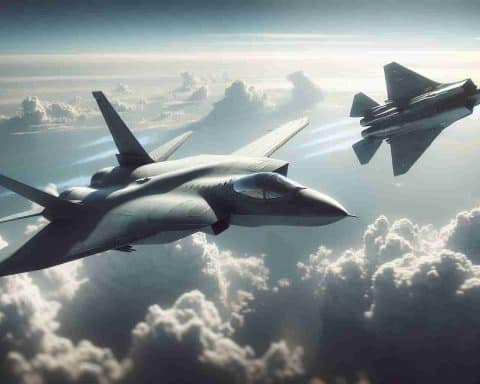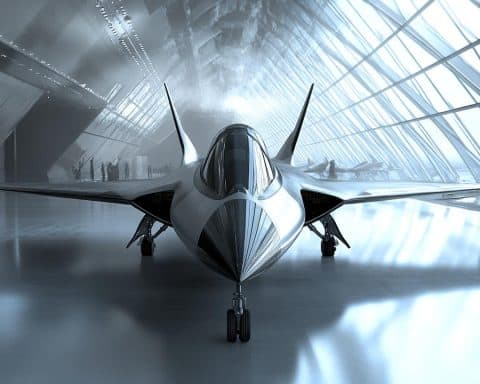In the recent Zhuhai Air Show, China unveiled cutting-edge developments in military aviation, prominently featuring the J-20S, a groundbreaking tandem-seat variant of their famed Chengdu J-20 fighter. This new aircraft, adept in precision strikes and sophisticated electronic warfare, demonstrates China’s strategic leap forward in aerial dominance. Unlike its American counterparts, China sees the J-20S as a cost-effective way to enhance its military might without plunging into the hefty costs and challenges of developing a full-fledged sixth-generation fighter.
While the show also flaunted a model of China’s proposed sixth-generation “White Emperor”, the real buzz surrounded the J-20S. Aviation specialists pointed out that by refining this advanced fifth-generation fighter, China is leaning towards incremental innovation rather than launching expensive new platforms, an approach starkly different from the U.S.’s costly NGAD program.
The J-20S is not just another stealth fighter—it’s a versatile command unit capable of coordinated operations with both manned and unmanned aerial systems. This multipurpose capability positions the J-20S as a key player in modern aerial warfare.
As Western analysts digest these revelations, concerns rise about what this means for global air combat dynamics. China’s emphasis on enhancing already potent systems serves as a potent reminder of their ingenuity in maximizing current technologies. Without engaging in extravagant spending, they are setting a new standard in military efficiency and operational capacity, pressing the U.S. to rethink its aviation strategy for maintaining future air superiority.
Why China’s Military Aviation Innovation is Sparking Global Interest
The Evolution of Military Technology: A Delicate Balance
China’s recent advancements in military aviation, notably highlighted by the introduction of the J-20S during the Zhuhai Air Show, have ignited interest and spurred discussion worldwide. However, beyond these unveiled technologies lies a broader narrative about military innovation and its implications for both humanity and technology.
As China showcases its strategic focus on incremental advancements with the J-20S, a dual-seat variant of the renowned Chengdu J-20, they are not just seeking to expand their arsenal but also to redefine the approach to military progress. This perspective prioritizes refinement over revolution, leveraging existing technologies and efficiently integrating them without escalating costs.
The Quiet Power of Incremental Innovation
The J-20S exemplifies how China is challenging traditional military development paradigms by opting for a cost-effective enhancement of its fifth-generation platforms rather than plunging into the complexities of developing a brand-new sixth-generation fighter. This mirrors a global trend where maximization of current technological prowess is highly regarded.
Advantages:
– Cost-Effectiveness: By updating existing models, China avoids the exorbitant costs linked with entirely new fighter designs.
– Efficiency: Rapid deployment and integration of improved technologies can enhance tactical capabilities without extensive development delays.
Disadvantages:
– Limited Leap in Capability: Incremental advancements may not deliver the transformative advantages of a revolutionary new platform.
– Potential Vulnerability: As technology evolves globally, relying too heavily on existing platforms could lead to weaknesses if adversaries make significant breakthroughs.
Technological Impact and Controversies
The J-20S’s role as a versatile command unit, coordinating with both manned and unmanned systems, encapsulates a new era of network-centric warfare. This evolution underscores the potential for current technologies to dramatically influence combat tactics and strategy. However, there are questions and controversies regarding this approach:
– Question: Does improving existing technology stifle groundbreaking innovation?
– Answer: While it may temporarily limit the scope of innovation, it promotes more practical advancements and immediate enhancements, maintaining current competitive edges.
– Question: How could this approach affect global military strategies?
– Answer: By adopting a more financially judicious approach, other nations may reevaluate the necessity and timing of expensive new military technologies, forcing a shift in global investment strategies.
A Path Forward for Humanity and Technology
China’s innovative strategy raises crucial questions about the future of military technology and its effects on global dynamics. While they exemplify the advantages of resourceful and strategic advancements, the world watches closely to see if this will prompt a broader reassessment of military spending and technological priorities.
These developments pose important ethical and strategic considerations regarding how nations should innovate and invest in defense technologies. While aiming for enhanced security, it’s vital to maintain a balance that also encourages broader, more peaceful technological growth for humanity.
For further insights on global military innovations, visit Janes or for broader technology news, check out Wired.






















